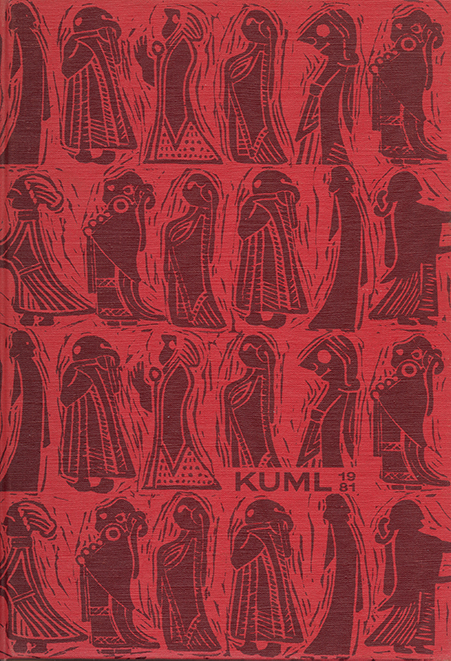and made these monuments
DOI:
https://doi.org/10.7146/kuml.v30i30.107749Keywords:
kuml, runic inscription, meaning ofAbstract
" ... and made these monuments ... "
Traditionally "kuml" in runic inscriptions is interpreted broadly as monument(s). However, the Danish philologist Karl Martin Nielsen believes that "kuml" in the plural means runestone plus other erected stones without inscription. Consequently this interpretation excludes a number of other monuments, for instance (grave)mounds.
"kuml" occurs frequently in Danish and Swedish runic inscriptions. The word "kuml" itself is identical in the singular and in the plural. Most often the word is found in the plural, which appears from the demonstrative pronoun "þausi" or "þusi" (these).
The basic meaning of "kuml" can be determined as "sign/token", and it would, therefore, be natural to interpret "kuml" as synonymous with runes. However, this cannot be confirmed.
The conception "sign/token" can have the meaning of various forms of concrete "signs/tokens", such as a stone, a (grave)mound, etc. So as a matter of principle nothing prevents "kuml" in the plural from standing for various forms of "signs/tokens", -such as a stone and a (grave)mound, etc.
In most cases "kuml" stands as an object of the verb "gørwa" (to do), but it also occurs in connexion with the verbs "resa" (to raise) and "sætia" (to set), which to a great extent is known from the phrase "NN raised /set this/these stone(s) ". However, the use of these verbs does not support the interprotation of "kuml" in the plural standing for stones only, because "to do" and "to raise/to set" do not constitute semantic parallels. The verb "to do" has a more comprehensive sense. Thus it can also -if so- be used in connexion with monuments, in which a (grave)mound forms a part.
We know of several examples of runestones in connexion with other erected stones, but on the other hand it is relatively rare to find a runestone placed in close connexion with contemporary (grave)mounds. On the two runestones at Jelling both inscriptions include the word "kuml", but to-day it is only possible to point out one stone-setting. Therefore, it is difficult not to include the two Jellingmounds. Possibly the oldest church at Jelling can also be classed with "kuml", because in a number of Swedish runic inscriptions "kuml" occurs in a Christian context.
Ole Thamdrup
Downloads
Published
How to Cite
Issue
Section
License
Fra og med årgang 2022 er artikler udgivet i Kuml med en licens fra Creative Commons (CC BY-NC-SA 4.0).
Alle tidligere årgange af tidsskriftet er ikke udgivet med en licens fra Creative Commons.


